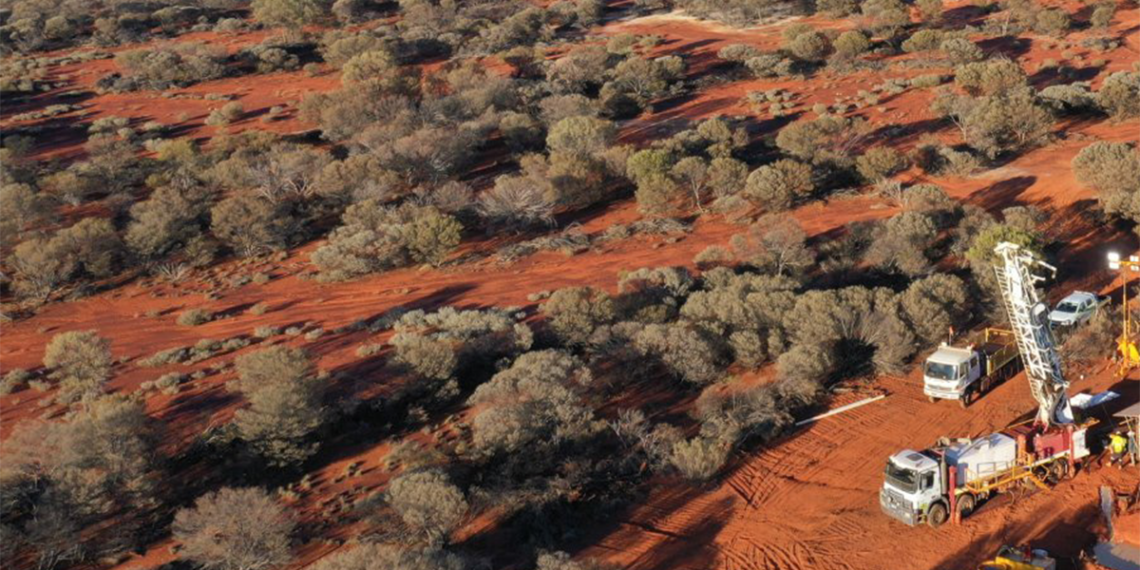Please give us an overview of the high-grade Class-1 nickel resources that Cannon holds in its Fisher East and Collurabbie deposits.
Fisher East is our primary focus. Here deposits are Kambalda Style channelized komatiite hosted nickel sulphide.
Total resource at Fisher East is currently 6.4Mt at 1.8% Ni for 116.3kt Ni in four deposits along an 8km section of basal komatiite flow. The strata hosting the deposits were subject to regional folding in the Archean and the deposits are now overturned, dipping 55-65° to the east and plunging sub vertically into the ground. The deposits sub-crop (i.e. come to the surface) and are completely open down plunge and to a lesser extent internally and laterally.
Collurabbie is intrusive magmatic style with a Ni/Cu/PGE/Co economic element suite. Resource at Olympia is currently 0.573Mt at 1.63% Ni, 1.19% Cu, 0.082% Co, 1.49g/t Pd, 0.85g/t Pt. Mineralization is hosted in a series of ultramafic sills intruded into seafloor sediments and basalts. Strata is regionally folded and now locally subvertical.
What work have you done since your IPO in August 2021 to increase this resource further?
The IPO raised A$6M in funds and we commenced drilling immediately at Fisher East. A 7,500m programme of diamond drilling at Camelwood, Musket, and Sabre resulted in a 49% increase in resource from 78kt Ni to 116kt Ni, including a maiden resource estimate for Sabre. We have already added 38kt Ni and a further upgrade at Sabre is planned in the next two months.
Focusing in on Fisher East, tell us more about the four key deposits that make up the project. Where do you see further opportunities to expand the resource?
We have four adjacent channelized deposits at Fisher East. All plunge downward and are completed open down plunge and are only constrained by the current drilling limits. The down-plunge extension to mineralization is the best opportunity at all four deposits with Sabre only drilled to 300m vertical depth, Musket to 600m vertical depth, Cannonball approximately 300m, and Camelwood approximately 500-600m.
You recently announced some exciting new results from the Sabre target at Fisher East – what did your diamond drilling reveal?
We launched a programme in March this year testing for high-grade nickel along the margins of the Sabre channel and we have successfully intersected a high-grade zone, including widths up to 3.7m of massive sulphide in this location, along the northern channel margin. High-grade mineralization has been drilled over a plunge extent of 250m and remains open up and down plunge as well as laterally across strike. Our exploration drilling at Sabre is current and ongoing.
What further exploration work and metallurgical testing do you have planned for 2022?
We will continue shallow geochemical drilling along the ore position contact south of Sabre. The aim is to closely target the ore position and ascertain potential zones to follow-up. We have at least 6km of untested strike in the southern zone and a further potential 20km of contact beyond that area. All within our 100% tenure.
In the second half of 2022 we plan to drill strategic dedicated metallurgical holes at Sabre and Musket and Camelwood to generate sufficient samples to launch into metallurgical test work. This will be bench testing of potential ore recovery and these data will form a core component of our upcoming scoping studies then potentially feasibility studies.
Turning to Collurabbie, tell us about the existing resource at the project and the opportunities you see to expand upon this.
At Collurabbie we have an intrusive style magmatic nickel play. There is an Ni-Cu-Co-PGE resource at Olympia hosted in an intruded ultramafic sill with a total Mineral Resource (JORC) estimate of 0.573Mt at 1.63% Ni, 1.19% Cu, 0.082% Co, 1.49g/t Pd, 0.85g/t Pt.
The mineralized sills are now semi-upright following regional folding and strike for some 15km across the Cannon tenure. Numerous anomalous Ni Cu Co PGE drill intercepts and mineralized zones exist across the full strike extent with most yet to be adequately tested.
This is a premium product optimized for battery and cathode manufacturers
Tell us about the existing infrastructure in your region of Western Australia and how this might provide you with a number of development options.
BHP and IGO have concentrators at Leinster some 200km west of Fisher East by existing roads.
Being close to Leinster in WA provides the company with multiple development options to, firstly, produce nickel concentrate on site and, secondly, the potential to toll treat mineralization at nearby concentrators at Leinster/Cosmos.
Turning to the nickel market, who do you see as the potential end users of the nickel products you hope to produce at Fisher East and Collurabbie?
We have Class 1 nickel sulphide deposits and our primary end user can be any off-taker. However, we will produce a premium product with the lowest carbon footprint that lends itself to nickel sulphate production. This is a premium product optimized for battery and cathode manufacturers.
Our resources are undeveloped with no previous mining activity. We have the opportunity to develop our deposits with a very low carbon footprint using, for example, a solar power station, and electric mining fleet, and a low-volume underground operation.
How do you compare with similar style nickel projects in terms of size and valuation?
In the Class 1 nickel sulphide space Cannon’s resources are already at the upper end of those undeveloped Australian assets. Fisher East at a global grade of 1.8% Ni is also on the stronger side.
Currently Cannon’s market capitalization is around AUS$30M. This represents an entry price in the mid A$200s on a MC/resource tonne basis. This is extremely attractive and amongst the lowest metrics currently.












